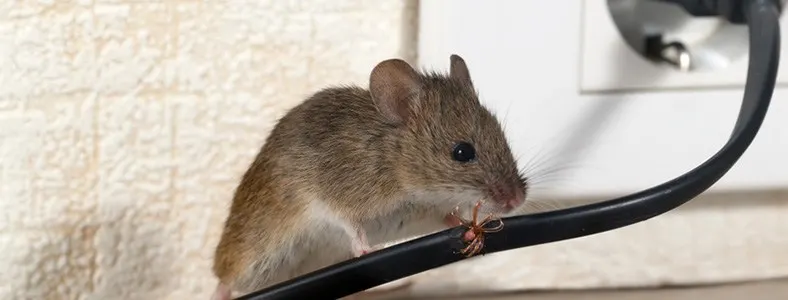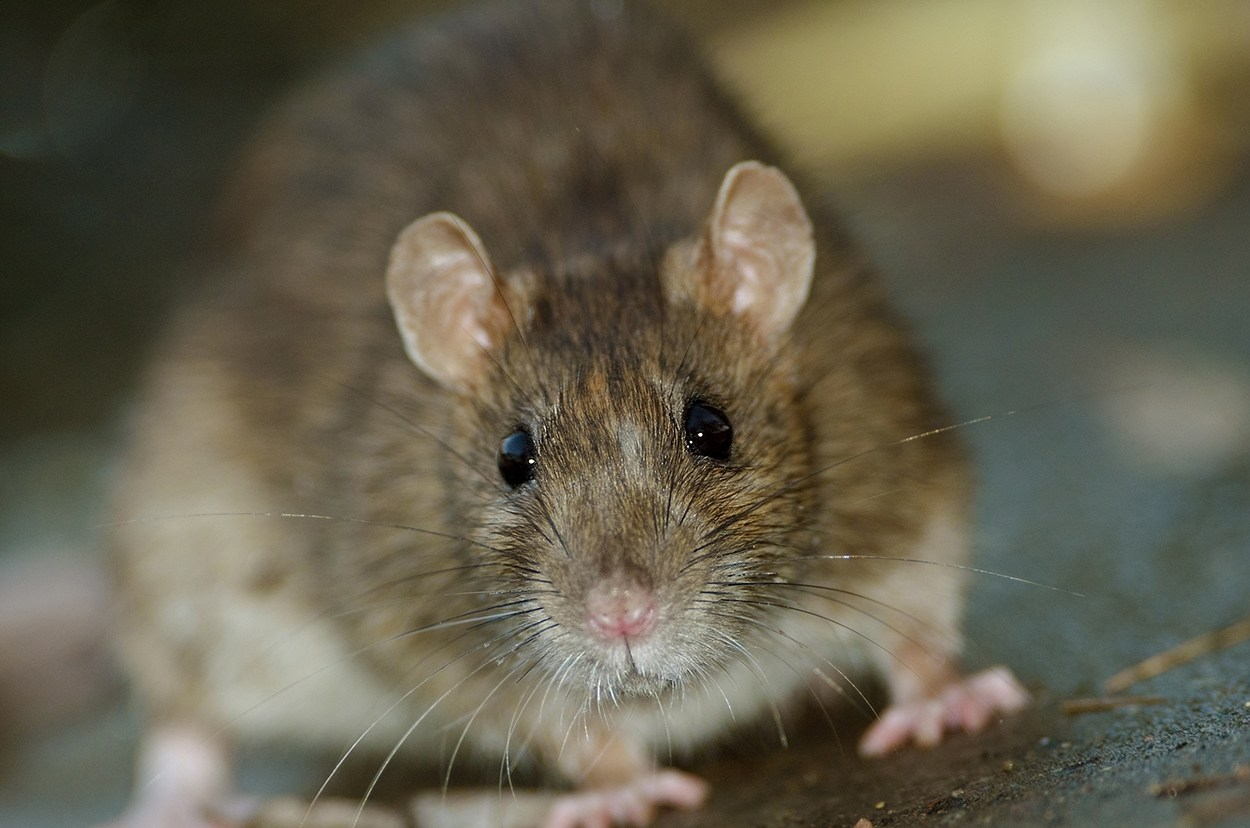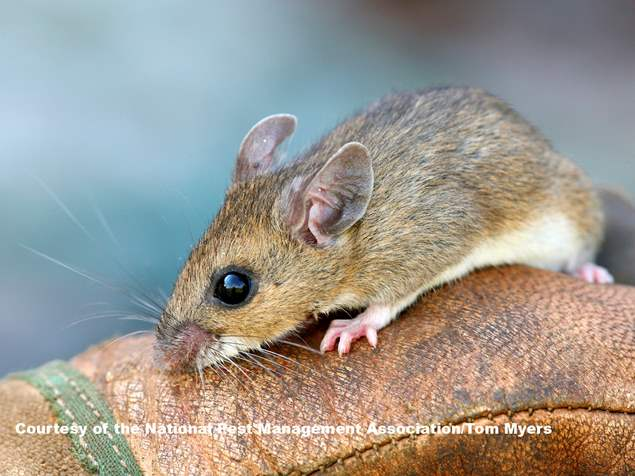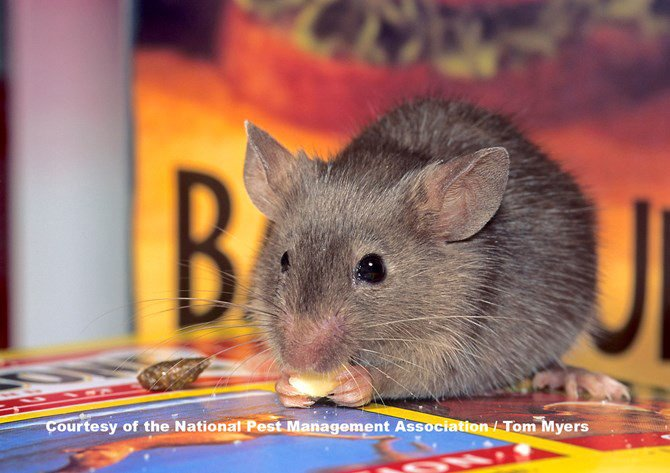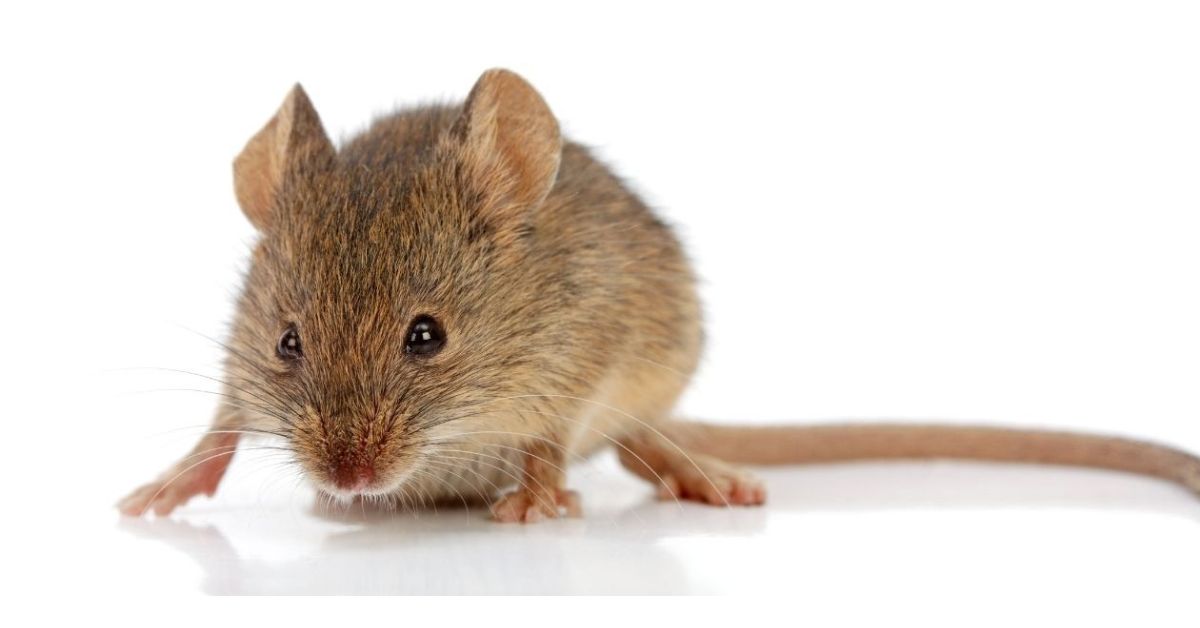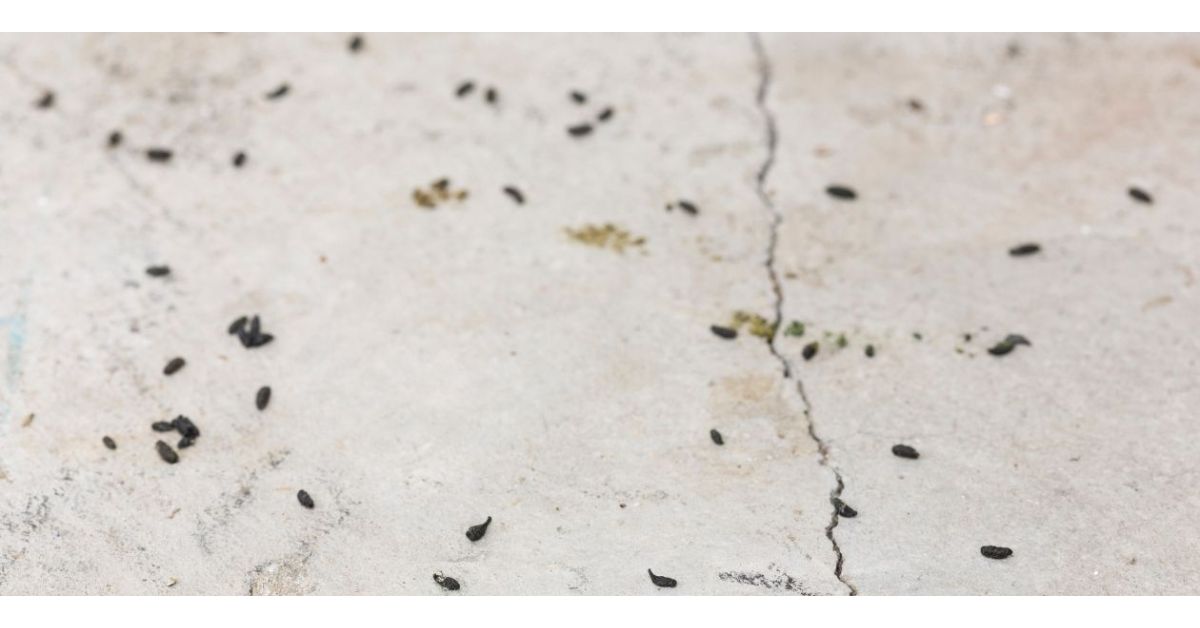 What's The Fastest Way To Catch A Mouse?
What's The Fastest Way To Catch A Mouse?

How to Get Rid of Mice
October 30, 2024
The Most Common Mice in the World
Identifying the species of mice in your home is essential for adequate control. The two most common types in the USA are the House Mouse and the Deer Mouse.
House Mouse
The house mouse is the most common mouse in the USA and the world. It is typically 1-2 inches long without its tail. House mice have light brown or gray fur, though color variations are possible. They have blunt snouts, large ears, and small eyes. Their droppings are rod-shaped and about 0.5 inches long. They prefer to eat cereal grains.
In cities, house mice may spend their entire lives indoors, while in rural areas, they may live outside near shrubs, weeds, or buildings, moving indoors when the weather gets cold. Once inside, they nest near food sources and feed on various items, including insects, dried fruit, and seeds.
-
Common Nest Locations: Inside, house mice nest in closets, walls, ceiling voids, under large appliances, or inside furniture. Outside, they nest in debris or ground burrows. Their nests are made from soft materials like insulation or paper, providing warmth and protection.
-
Mouse Territory and Feeding Habits: A mouse's territory is typically close to its food source, usually within 10-30 feet of the nest. Mice are nibblers, making 20-30 visits to different feeding spots in dark, secure areas. Droppings and odor are common signs of these feeding locations. A dominant male typically controls each nest, with territorial disputes among mice.
The Deer Mouse
The deer mouse is commonly found in rural areas of the USA and is less likely to enter buildings than the house mouse. Deer mice are slightly larger, with a body length of 3-4 inches, not including their tail, which is about the same length as their body. Their fur is typically grayish-brown on the back with a white underbelly and feet, giving them a distinctive appearance. They have large eyes and ears, and their droppings are small and pellet-shaped, similar to other mice species.
Deer mice primarily live outdoors, building their nests in burrows or sheltered areas such as hollow logs, tree stumps, or piles of debris. However, during colder months, they may occasionally seek shelter inside buildings like barns, sheds, or cabins, though this is less common than with house mice. These mice are omnivorous and feed on seeds, fruits, insects, and small invertebrates. When they do enter homes or buildings, they can cause similar damage as house mice by gnawing on wires, insulation, and food supplies.
-
Common Nest Locations: Outdoors, deer mice construct their nests in burrows or other sheltered areas such as woodpiles, dense vegetation, or abandoned animal nests. They use soft materials like grass, leaves, and fur to line their nests for warmth and comfort. Inside, when they do occasionally invade buildings, they might create nests in secluded areas like attics, basements, or storage spaces.
-
Deer Mouse Territory and Feeding Habits: Deer mice typically establish territories close to food sources, similar to house mice, but they tend to roam over larger distances, especially outdoors. Their territories can extend up to 100 feet or more from their nest, depending on the availability of food. Deer mice are active foragers who store food in hidden caches for later consumption. They are nocturnal and often visit several feeding spots within their territory.
Signs of a Mouse Infestation
The critical first step to removing a mouse infestation is inspecting possible mouse activity. It is essential to find their runways and feeding areas to properly place traps and baits. The best time to check is at dusk. Using a flashlight would be handy for seeing into corners and recessed areas.
Droppings, Tracks, Furniture Damage, Contaminated Food, & Stains
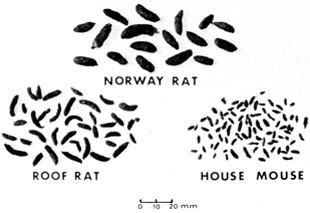
Common signs of a mouse infestation include rodent tracks, droppings, live or dead mice, and gnawing damage on furniture, walls, or food packaging. You may also notice urine stains or grease marks along walls and baseboards, which mice leave as they follow their regular paths.
Mice can contaminate food with their urine and feces, spread diseases, and trigger allergic reactions. Studies show that children in urban areas have experienced allergic reactions from exposure to mouse urine. In the USA, deer mice, white-footed mice, and other rodents can carry Hantavirus, with cases reported in the southwestern region. This makes prompt mouse extermination crucial.
Pet Excitement or Agitation
Another sign of a potential mouse infestation is when your pet suddenly becomes excited or agitated. Your pet may be detecting mouse movement or sounds that are difficult for humans to notice.
How to Prevent Mice Infestations
To effectively control mice, removing food sources and using traps or baits is essential. Mice feed on both human and pet food, so store all food, including seeds, grains, and pet food, in sealed containers (preferably airtight ones). Keep kitchen surfaces clean and free of food particles, and disinfect areas where mice have been with a 9:1 water-to-bleach solution.
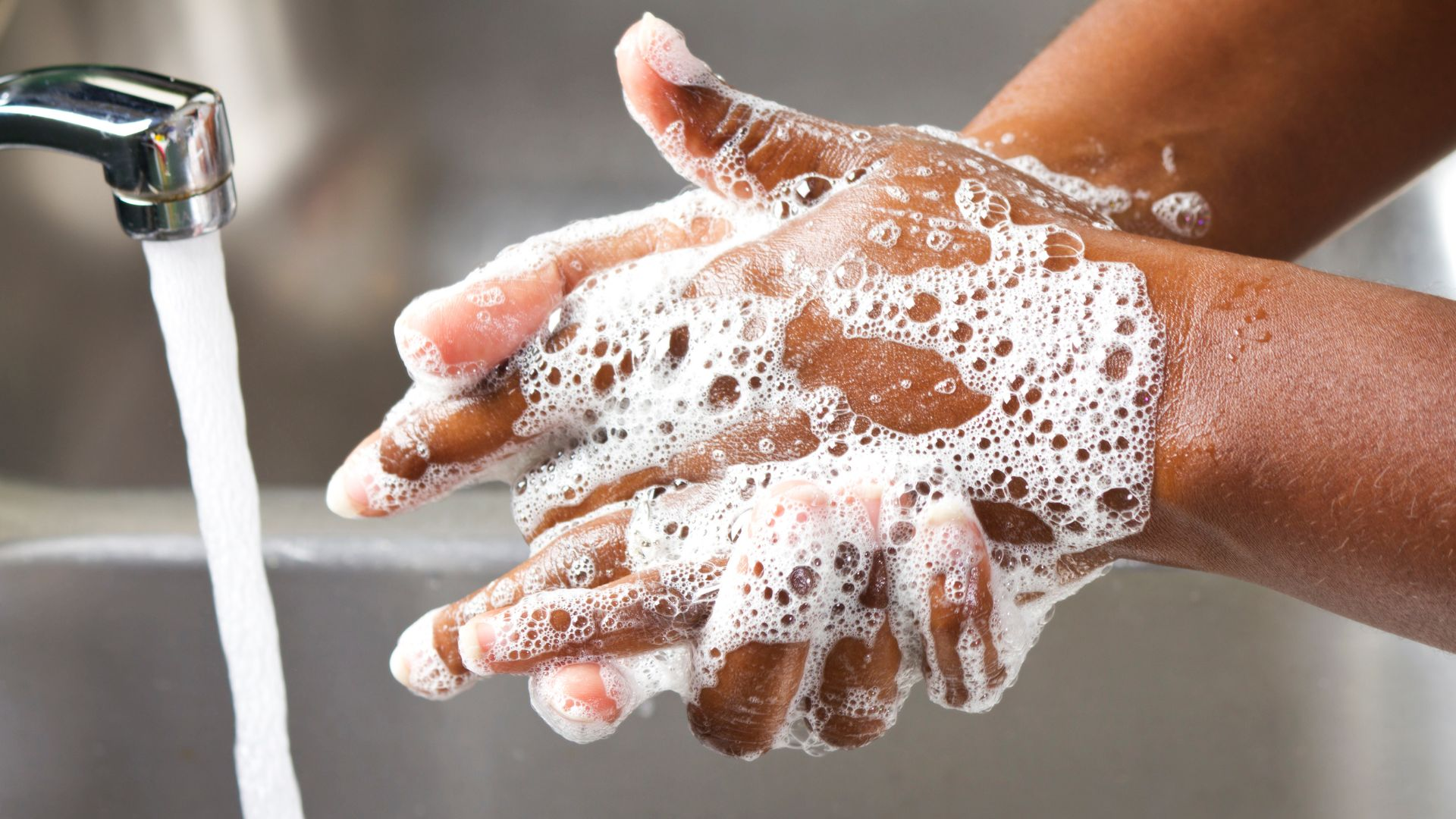
Adopt a Routine
The best way to prevent mice infestations is by establishing a solid control routine. Start by sealing entry points with materials like steel wool or wire mesh, as mice dislike these. Regularly check for and store food in sealed containers. Use natural deterrents like peppermint or clove oil, and inspect your home’s weather stripping and foundation for signs of gnawing or nesting.
Remove Nesting Materials
Inspect your home for entry points, as mice can squeeze through cracks as small as 1/4". Seal gaps around utility lines, pipes, and foundations to block access. Additionally, remove any soft materials like fabric or paper that mice could use for nesting, and discard garbage or recyclables promptly.
Use Natural Repellants
To further prevent infestations, use natural repellents like peppermint oil, chili pepper, or cloves, which are offensive to mice. Soak cotton balls in these essential oils and place them in areas where mice have been detected, such as under appliances or in cupboards. Keeping your home clean and removing clutter both indoors and outdoors will also help deter mice.
Key Takeaway
Removing potential food sources will discourage mice and make mice more likely to investigate mouse bait or traps.
DIY Mice Treatment: Baits, Traps, & Other Solutions
After identifying signs of mouse activity, mouse traps or bait are the most reliable ways to control an infestation. Snap traps, including traditional wooden ones, and glue traps are effective methods for eliminating mice when the infestation becomes unmanageable. Placing these traps or bait in the detected areas is vital to resolving the problem.
Mouse Trap Setup, Cleaning, & Disposal
This method is one of the best ways to get rid of mice that enter your home and has several advantages over baiting. The top advantage of trapping is locating the dead rodent instead of finding a decomposing corpse. The next advantage is not having poison baits in the area.
Check out these helpful guides as you embark on your mouse control journey:
How to Use Bait
Rodenticides are poison baits and should only be used in areas inaccessible to children and pets. As required by national law, tamper-resistant bait stations must always be used to keep the bait secure. We offer single-feeding bait, which delivers a lethal dose with just one feeding, available in pellet, meal, blox, or block forms.
Natural & Eco-Friendly Mouse Control
- Essential Oils: Certain essential oils, such as peppermint and eucalyptus, are known to repel mice due to their strong scents. Soak cotton balls in these oils and place them in areas where mice are likely to enter or nest.
- Homemade Repellents: Natural repellents can be made using common household ingredients. To deter mice, a mixture of water, hot pepper flakes, and dish soap can be sprayed around entry points.
- Adopting Predators: Cats and some dog breeds are natural predators of mice. Adopting a pet that is a known mouser can help in controlling the mouse population in your home.
The Differences Between Mice & Rats
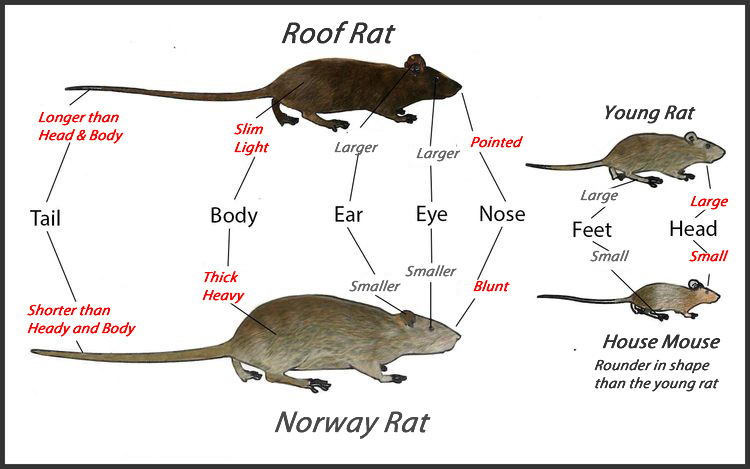
Accurately identifying the type of rodent is key to solving the problem, as mice and rats often require different extermination approaches. Young rats, for example, have disproportionately larger heads compared to their bodies, while mice have more balanced proportions. Though it can be hard to tell while the rodent is moving, key traits like a mouse's round ears, even on a dead one, can guide your strategy. Knowing whether you're dealing with mice or rats allows you to choose the right method to effectively control the infestation.
Order Mouse Control Products from DIY Pest Control
Taking decisive action against mice is crucial to protect your home and health. DIY Pest Control offers a comprehensive range of effective mouse control products, from reliable traps and potent rodenticides to eco-friendly repellents. Our expertly curated selection ensures that you have access to the best solutions to tackle any mice infestation, big or small. Don't let mice take over your space—visit our store today and equip yourself with the tools you need to maintain a mouse-free environment.
Shop Mouse Control Products



